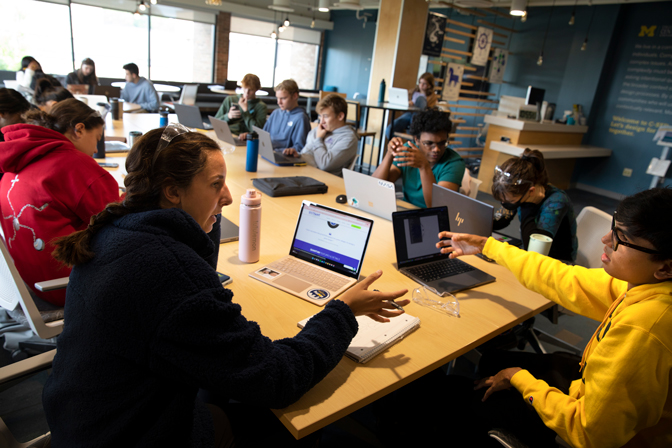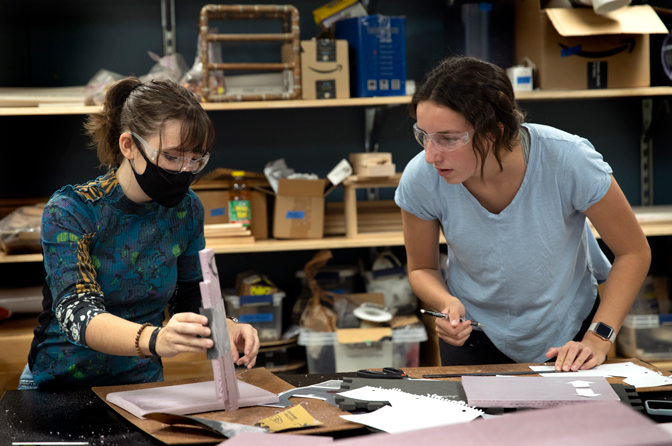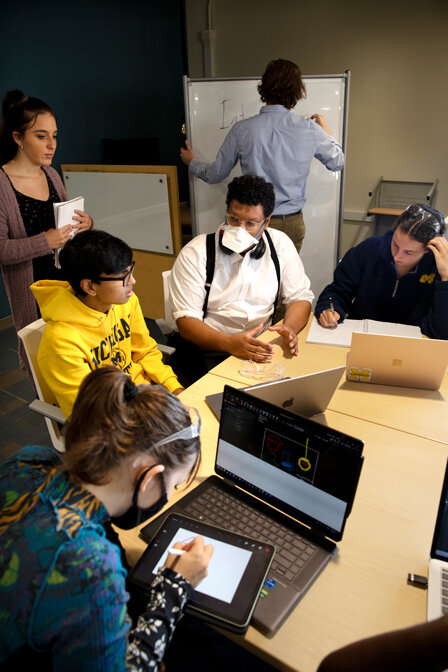
$1.2M toward a curriculum for equity-centered engineers
Michigan Engineering is creating a framework for teaching how social problems impact engineering—and how engineers can fight inequality.

Michigan Engineering is creating a framework for teaching how social problems impact engineering—and how engineers can fight inequality.
Michigan Engineering’s effort to rethink engineering education to include the social aspects of engineering practice is now funded with $1.2 million from the National Science Foundation, establishing the Teaching Engineering Equity Center.
The center will expand a library of case studies in which social considerations influenced engineering outcomes, develop a framework for teaching the social aspects of engineering, and train cohorts of professors, lecturers, and graduate student instructors on incorporating these topics into their courses.
“We’re formalizing what it means to teach new engineers to practice in an equity-centered way, so that they understand the gaps that exist in society and can create engineering solutions that deliberately close those gaps rather than unintentionally expand them,” said Alec D. Gallimore, the Robert J. Vlasic Dean of Engineering and principal investigator of the center.
The Teaching Engineering Equity Center is funded through the National Science Foundation’s Broadening Participation in Engineering Program, which aims to support the development of a diverse and prepared engineering workforce and build more inclusive and equitable academic experiences. The center has a unique focus on embedding diversity, equity and inclusion content directly into the curriculum, equipping students and instructors with strategies for equitable engineering practice and improving the engineering climate.

Researchers and staff at Michigan Engineering’s Center for Socially Engaged Design (C-SED) have been documenting real-world case studies for three years, focusing on how engineering decisions affect inclusion and equity. For instance, the first artificial heart, designed by a male-dominated team, was too large for most women. Other examples include algorithms that give biased results, excluding people of color from jobs or reducing the quality of medical care they receive.
“We know that to make progress on equity in engineering, students must understand how engineering solutions can harm members of society. At the same time, engineers need to understand how the identities of those producing solutions—and how engineers interact with one another—affect engineering outcomes,” said Steven Skerlos, a co-principal investigator of the center, faculty director of C-SED and an Arthur F. Thurnau Professor and a professor of mechanical engineering.
Different case studies can fit into different kinds of courses—biomedical engineering, mechanical engineering, and computer science and engineering for the examples above. Other case studies zoom in on teams, looking at how group dynamics can suppress ideas or prevent them from even being considered at all.
The case studies team is also focused on historical examples such as the work of Elijah McCoy, a Black American engineer and prolific inventor who, despite developing important lubrication systems for steam engines, couldn’t start his own company until late in life because of the barriers posed by the Jim Crow era in the U.S. These historically oriented case studies will help students explore what has changed in engineering, what hasn’t, and the throughlines from past to present.
“We are excited to leverage this opportunity to engage the broader engineering community to investigate what holistic equity means in the classroom and to create resources to support faculty in bridging the societal and technical elements of engineering,” said Ann Verhey-Henke, strategic director of C-SED.

To integrate the lessons of these case studies into the undergraduate experience, the TEE Scholars team will lead the effort to develop and evaluate a framework that can guide the integration of engineering-relevant content on diversity, equity and justice—as well as inclusive teaching practices—into engineering courses. By reviewing research studies and interviewing professionals working on these issues at peer universities, this team will provide guidance on presenting this content in a way that respects and supports students.
“The Teaching Engineering Equity Center is about transforming the undergraduate curriculum—and thus students’ learning experiences—so they reflect not only the university’s and the college’s commitment to diversity, equity and inclusion and also prepare students for the work they will do as engineers,” said Lisa Lattuca, co-principal investigator leading the TEE Scholars and a professor of higher education.
“Supporting faculty to do this work is critical to this project’s success—and the project’s success is critical to our students’ learning,” she said.

Many faculty members may need to learn background knowledge and new skills to teach these subjects well, including nuanced delivery and classroom management to ensure that students with marginalized identities feel included but not singled out—and students with majority identities don’t shut down. Tershia Pinder-Grover, director of the Center for Research on Learning and Teaching–Engineering and a co-principal investigator of the center, will lead the part of the project that creates teaching circles to help faculty and later graduate student instructors learn to teach equity-centered concepts.
“Even if you have the learning objectives connected with case studies, if the course that you’re developing doesn’t have the environment where students feel they can learn best, that’s also a problem. And so part of the teaching circle will focus on supporting faculty as they think about creating a classroom environment that will allow for these case studies to really flourish,” said Pinder-Grover.
Gallimore is also the Richard F. and Eleanor A. Towner Professor of Engineering, an Arthur F. Thurnau Professor, and a professor of aerospace engineering and applied physics. Skerlos is also a professor of civil and environmental engineering. Lattuca is also a professor of integrative systems and design.